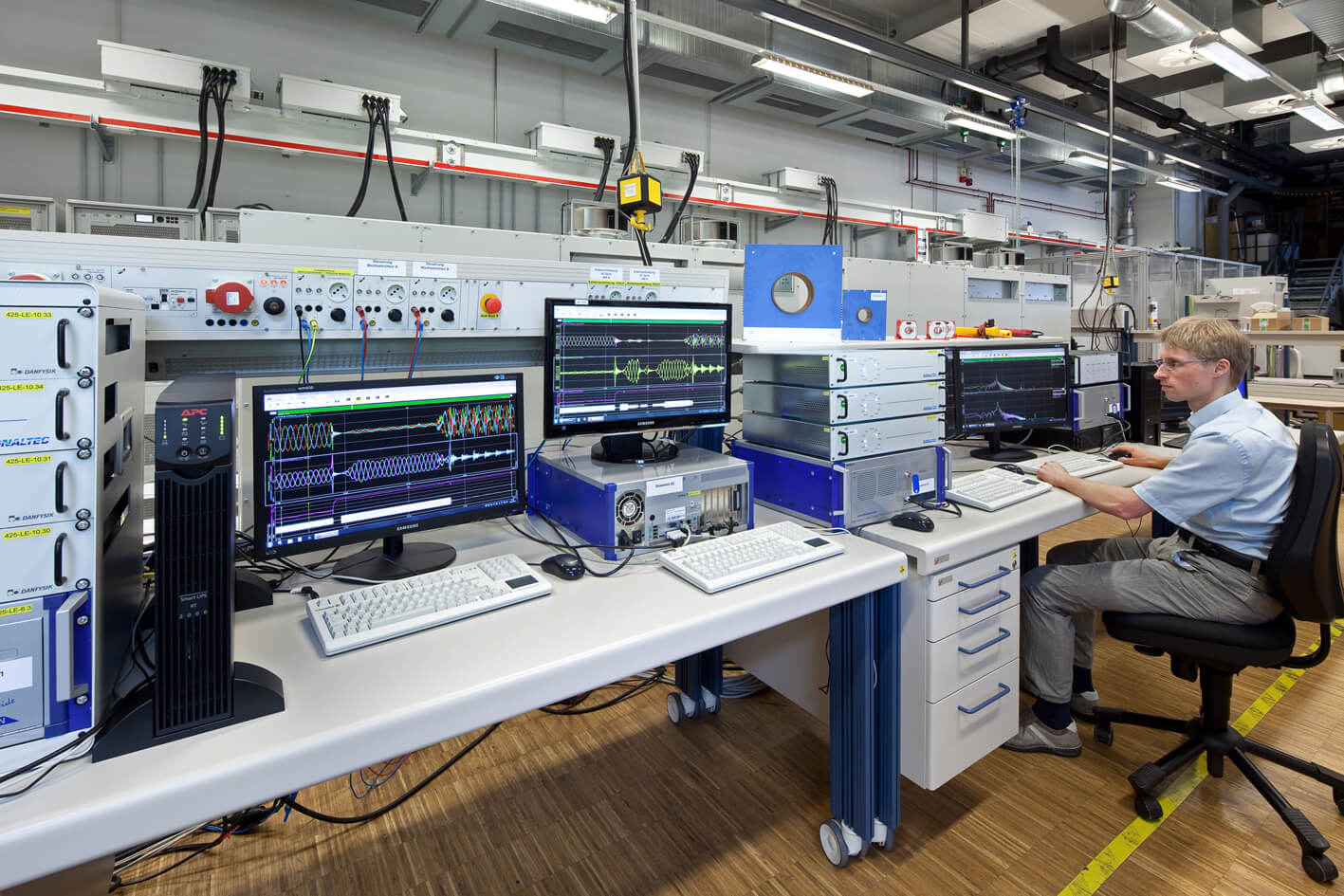Press Release #14
Solar Systems Stabilize the Power Grid During Faults - Freiburg researchers substantiate the grid-supporting capability of PV plants with field test measurements
On sunny days during midday, up to a third of the German electricity demand is supplied by solar power. Because of this, solar power plants that feed into the medium voltage grid must meet the medium-voltage directive valid for Germany. Among other criteria, the directive requires an active contribution to grid stabilization. As a service to the grid, the power plants must be able to regulate active and reactive power, which serve as stabilizing factors for the grid frequency and voltage during normal operation. PV power plants are required to provide not only static voltage control but also dynamic grid support to guarantee grid stabilization during grid faults and voltage sag events. The security of supplies can be guaranteed only when all power plants, including renewables, react correctly and quickly to the actual situation on the electricity grid.
In a field test at the five megawatt solar park in Dürbheim, Germany, researchers at Fraunhofer ISE have shown that also PV power plants can reliably carry out this function.
This protective function was proven in a so-called Low Voltage Ride Through (LVRT) test, which each power generation unit must pass. The test demonstrates the unit’s capability to actively support the power grid during a low voltage sag event. According to existing guidelines, measuring the single inverters, those units which convert direct current from the PV array into alternating current, is sufficient. As a consequence, simulation calculations based on singular inverter measurements were used until recently to determine the LVRT capability for the entire PV power plant. In the past those simulation calculations were never verified by system measurements.
In order to carry out system field tests at a large solar park with several inverters, the researchers in Freiburg installed a LVRT test container, normally used for system measurements of wind power stations from the company windtest Grevenbroich gmbh (wtg). The test campaign took place at the five megawatt solar park in Dürbheim during several weeks in April 2013. It was carried out in cooperation with the inverter manufacturer KACO newenergy Gmbh, the solar park operator BES new energy Gmbh as well as the local energy utility EnBW AG.
To carry out a detailed investigation of the solar park performance during the LVRT tests, an extensive, mobile measurement system was developed and installed in the solar park Dürbheim for the duration of the tests. “The challenge was to synchronously gather high-resolution current and voltage data from five locally distributed inverter stations,” reports Gregor Dötter, head of the research project at Fraunhofer ISE. “We installed GPS sensors at the measurement stations which allowed us to put a precise timestamp on each measured value. Via radio link, the data was transmitted several hundred meters to a central measurement station.” Here the researchers could follow the behavior of each inverter live, analyze the test results and compare them to the simulations which were previously performed.
“The new measurement system is a very valuable tool for analyzing the complex interaction between the single inverters,” says Sönke Rogalla, head of Central Inverters and Solar Power Stations at Fraunhofer ISE. “It allows us observe the performance of the solar park much more closely. With the measurement data, we can improve and optimize our simulation programs with respect to power plant behavior during grid faults. We also are able to develop improved control strategies which enable solar parks to establish a central and reliable function in our future energy supply.”
A five megawatt photovoltaic system is installed at the energy park Dürbheim, located in southern Baden-Württemberg at the fringe of the Schwäbische Alb mountains. It is situated on property, formerly belonging to NATO. The PV system provides electricity for 1500 households and serves simultaneously as a research platform.
For more than 30 years, Fraunhofer ISE has been successfully developing high efficiency power electronics for applications in renewable energy and industry. The project “Verifikation der dynamischen Netzstützung durch PV-Anlagen bei Fehlern im Mittelspannungsnetz” (Verification of the dynamic grid support through PV systems during faults in the medium-voltage grid) was financed by the Federal Ministry for Environment, Nature Conservation and Nuclear Safety (BMU), the participating inverter manufacturers and the operator of the energy park in Dürbheim. Further laboratory and field tests are planned with the participating inverter manufacturers: AEG Power Solutions GmbH, BONFIGLIOLI VECTRON GmbH and KOSTAL Solar Electric GmbH. Further project goals include expanding on the existing guidelines and investigating additional possibilities to manage grid stability using photovoltaic inverters. To assist the transformation towards 100% renewable energy, our research in this area continues. The results will be used to develop future guidelines.
Last modified:
